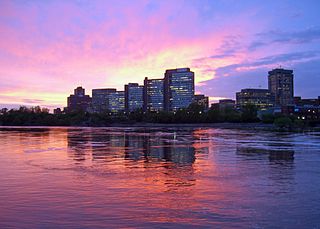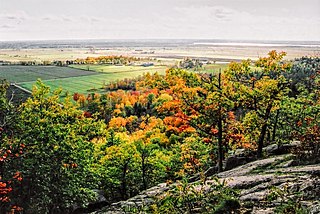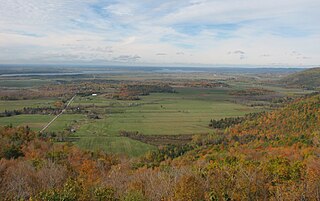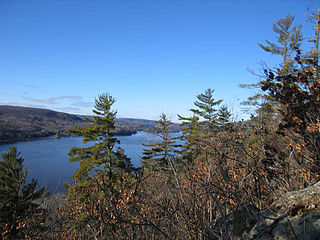Related Research Articles

Gatineau is a city in southwestern Quebec, Canada. It is located on the northern bank of the Ottawa River, immediately across from Ottawa, Ontario. Gatineau is the largest city in the Outaouais administrative region of Quebec and is also part of Canada's National Capital Region. As of 2021, Gatineau is the fourth-largest city in Quebec with a population of 291,041, and it is part of the Ottawa-Gatineau census metropolitan area with a population of 1,488,307 making it the fourth largest in Canada.

Hull is the central business district and oldest neighbourhood of the city of Gatineau, Quebec, Canada. It is located on the west bank of the Gatineau River and the north shore of the Ottawa River, directly opposite Ottawa. As part of Canada's National Capital Region, it contains offices for more than 20,000 civil servants. It was named after Kingston upon Hull in England.
Canada's contemporary theatre reflects a rich diversity of regional and cultural identities. Since the late 1960s, there has been a concerted effort to develop the voice of the 'Canadian playwright', which is reflected in the nationally focused programming of many of the country's theatres. Within this 'Canadian voice' are a plurality of perspectives - that of the First Nations, new immigrants, French Canadians, sexual minorities, etc. - and a multitude of theatre companies have been created to specifically service and support these voices.

Central Canada is a Canadian region consisting of Ontario and Quebec, the largest and most populous provinces of the country. Geographically, they are not at the centre of Canada but instead overlap with Eastern Canada toward the east. Because of their large populations, Ontario and Quebec have traditionally held a significant amount of political power in Canada, leading to some amount of resentment from other regions of the country. Before Confederation, the term "Canada" specifically referred to Central Canada. Today, the term "Central Canada" is less often used than the names of the individual provinces.

The Gatineau Hills are a geological formation in Canada that makes up part of the southern tip of the Canadian Shield, and acts as the northern shoulder of the Ottawa Valley. They are also the foothills of the Laurentian Mountains which stretch east through Quebec, beginning north of Montreal and joining up with others into Vermont and New Hampshire.

The Ottawa Valley is the valley of the Ottawa River, along the boundary between Eastern Ontario and the Outaouais, Quebec, Canada. The valley is the transition between the Saint Lawrence Lowlands and the Canadian Shield. Because of the surrounding shield, the valley is narrow at its western end and then becomes increasingly wide as it progresses eastward. The underlying geophysical structure is the Ottawa-Bonnechere Graben. Approximately 1.3 million people reside in the valley, around 80% of whom reside in Ottawa. The total area of the Ottawa Valley is 2.4 million ha. The National Capital Region area has just over 1.4 million inhabitants in both provinces.

The Laurentian Mountains, also known as the Laurentians or Laurentides, are a mountain range in Canada. The range is 1,448 km long and ranges in height from 500 m with peaks over 1,000 m. The Laurentian Mountains extend across Labrador and Quebec within the Laurentian Upland, which contains foothills in northeastern Ontario. The range is located near the rivers of Ottawa, St. Lawrence, and Saguenay. The Laurentian Mountains primarily stretch across multiple regions in Quebec, with geologic formations such as the Jacques-Cartier Massif located within the range.

The National Capital Region (NCR), also known as Canada's Capital Region and Ottawa–Gatineau, is an official federal designation encompassing the Canadian capital of Ottawa, Ontario, the adjacent city of Gatineau, Quebec, and surrounding suburban and exurban areas. Despite its designation, the NCR is not a separate political or administrative entity and falls within the provinces of Ontario and Quebec.

The Gatineau River is a river in western Quebec, Canada, which rises in lakes north of the Baskatong Reservoir and flows south to join the Ottawa River at the city of Gatineau, Quebec. The river is 386 kilometres (240 mi) long and drains an area of 23,700 square kilometres (9,200 sq mi).

Mario Laframboise is a Canadian politician who served as mayor of Notre-Dame-de-la-Paix and Reeve of the Papineau MRC before getting into federal politics. In the 2000 Canadian federal election, Laframboise was elected to the House of Commons as the Bloc Québécois candidate in the riding of Argenteuil—Papineau—Mirabel. He was easily re-elected in the 2004, 2006 and 2008 elections, however he was defeated in the 2011 election by NDP's Mylène Freeman. A former notary, he was the Bloc critic to the Minister of Transport and later to the Minister of Infrastructure. He was also vice-president of the federal permanent committee of Transport, Infrastructure and Communities.

The Great Lakes-St. Lawrence Lowlands, or simply St. Lawrence Lowlands, is a physiographic region of Eastern Canada that comprises a section of southern Ontario bounded on the north by the Canadian Shield and by three of the Great Lakes — Lake Huron, Lake Erie and Lake Ontario — and extends along the St. Lawrence River to the Strait of Belle Isle and the Atlantic Ocean. The lowlands comprise three sub-regions that were created by intrusions from adjacent physiographic regions — the West Lowland, Central Lowland and East Lowland. The West Lowland includes the Niagara Escarpment, extending from the Niagara River to the Bruce Peninsula and Manitoulin Island. The Central Lowland stretches between the Ottawa River and the St. Lawrence River. The East Lowland includes Anticosti Island, Îles de Mingan, and extends to the Strait of Belle Isle.
In Ottawa, Canada, ice hockey clubs date back to the first decade of recorded organized ice hockey play. The men's senior-level Ottawa Hockey Club is known to have played in a Canadian championship in 1884. Today, Ottawa hockey clubs are represented in all age brackets, in both men's and women's, in amateur and professional.

The Laurentian Upland is a physiographic region which, when referred to as the "Laurentian Region" or the Grenville geological province, is recognized by Natural Resources Canada as one of five provinces of the larger Canadian Shield physiographic division. The United States Geological Survey recognizes the Laurentian Upland as the larger general upland area of the Canadian Shield.
Expenditures by federal and provincial organizations on scientific research and development accounted for about 10% of all such spending in Canada in 2006. These organizations are active in natural and social science research, engineering research, industrial research and medical research.

Mario Duschenes, CM, LL.D. was a Canadian flautist, recorder player, music educator and conductor.
The Music Scene is a Canadian bilingual quarterly magazine that promotes classical music in Canada. The magazine was established by Wah Keung Chan in September 1996. Each issue contains a comprehensive calendar of concerts, CD, DVD and book reviews, interviews with musicians as well as feature articles on the local, national and international classical music scenes.

The Canadian province of Quebec formed the Quebec, Montreal, Ottawa and Occidental Railway (QMO&OR) in 1874 to link those cities since private companies, without the usual subsidies from the Federal Government of Canada, could not get financing, mainly because the Grand Trunk Railway was lobbying against it.
References
- ↑ "Carleton University Jazz Camp: a happy first set". Ottawa Jazz Scene, by Alayne McGregor / 21 August 2010
- ↑ Music Magazine. Vol. 8–9. Barrett & Colgrass. 1985. p. 68.
- ↑ "Come Sing Messiah". www.cammac.ca. Retrieved 25 March 2018.
- ↑ "CAMMAC: 60 Years of Summer Music Camp for All". La Scena Magazine, by Rebecca Anne Clark / February 1, 2014
- ↑ CAMMAC - Unity in Diversity. Vol. 6–9. 1960. pp. 3–6.
{{cite book}}:|work=ignored (help) - ↑ Masters Abstracts International. Vol. 23–24. University Microfilms. 1985. p. 9.
- ↑ "Camping with CAMMAC builds a musical community". ArtsFile, By Peter Robb, August 2, 2017
- ↑ Paul Helmer (22 June 2014). Growing with Canada: The Émigré Tradition in Canadian Music. McGill-Queen's Press - MQUP. p. 211. ISBN 978-0-7735-7624-7.
- ↑ "CAMMAC virtual camp".